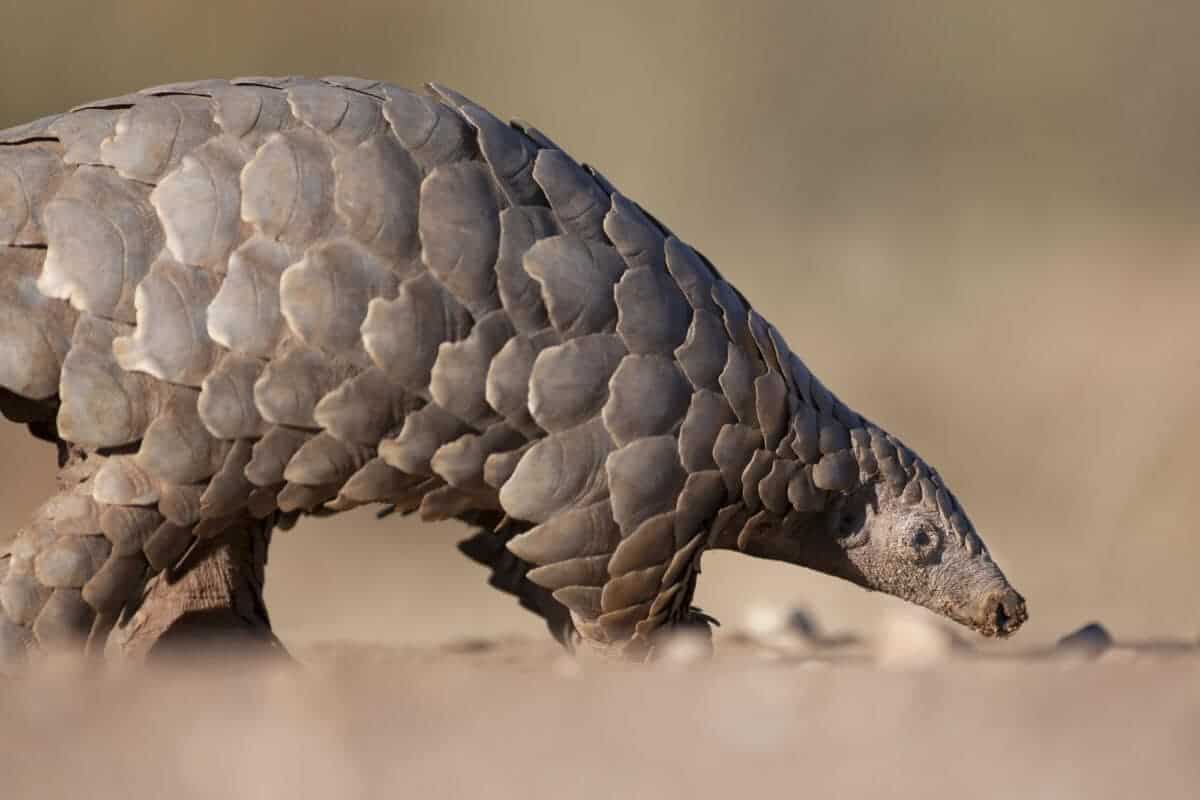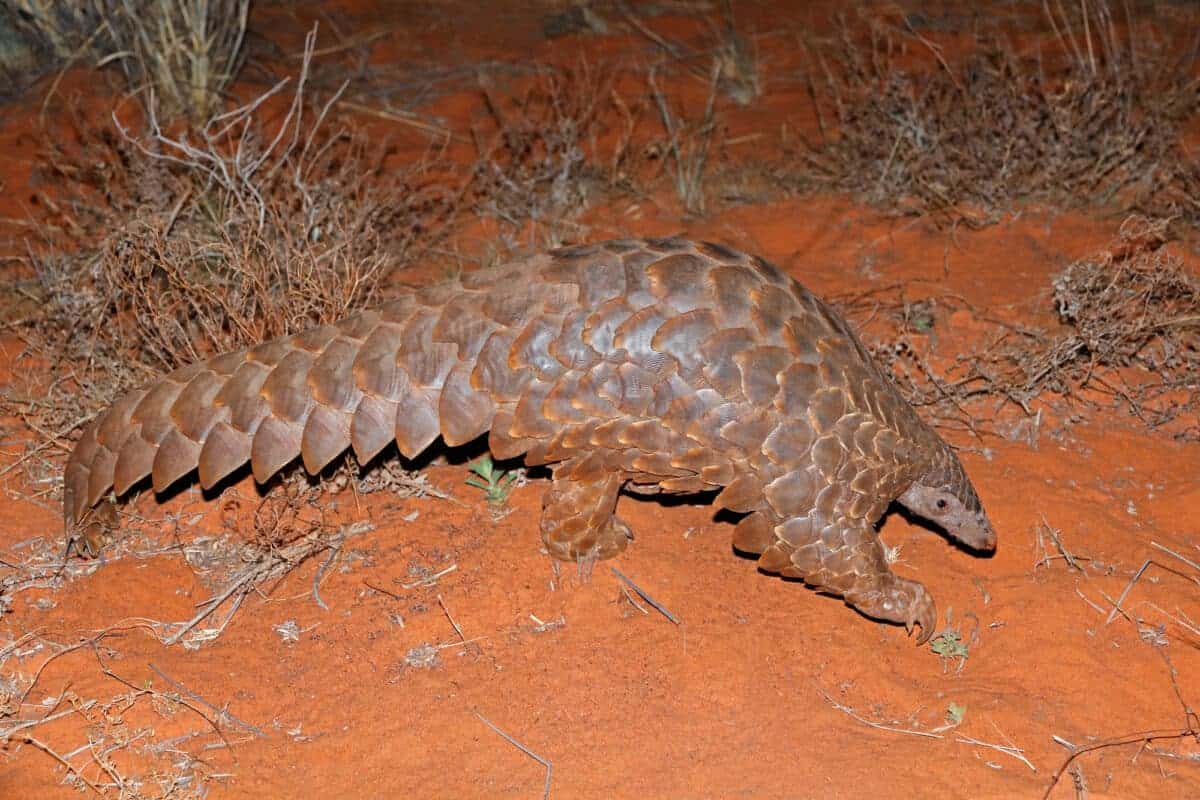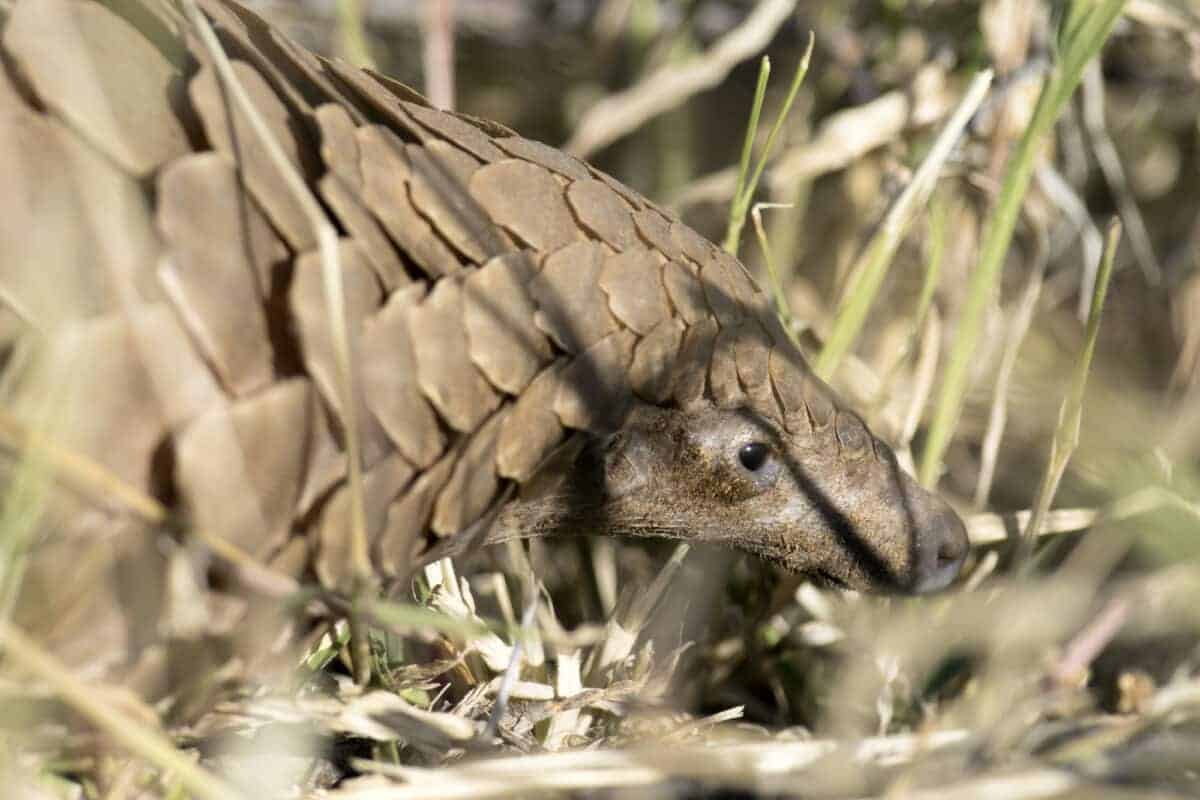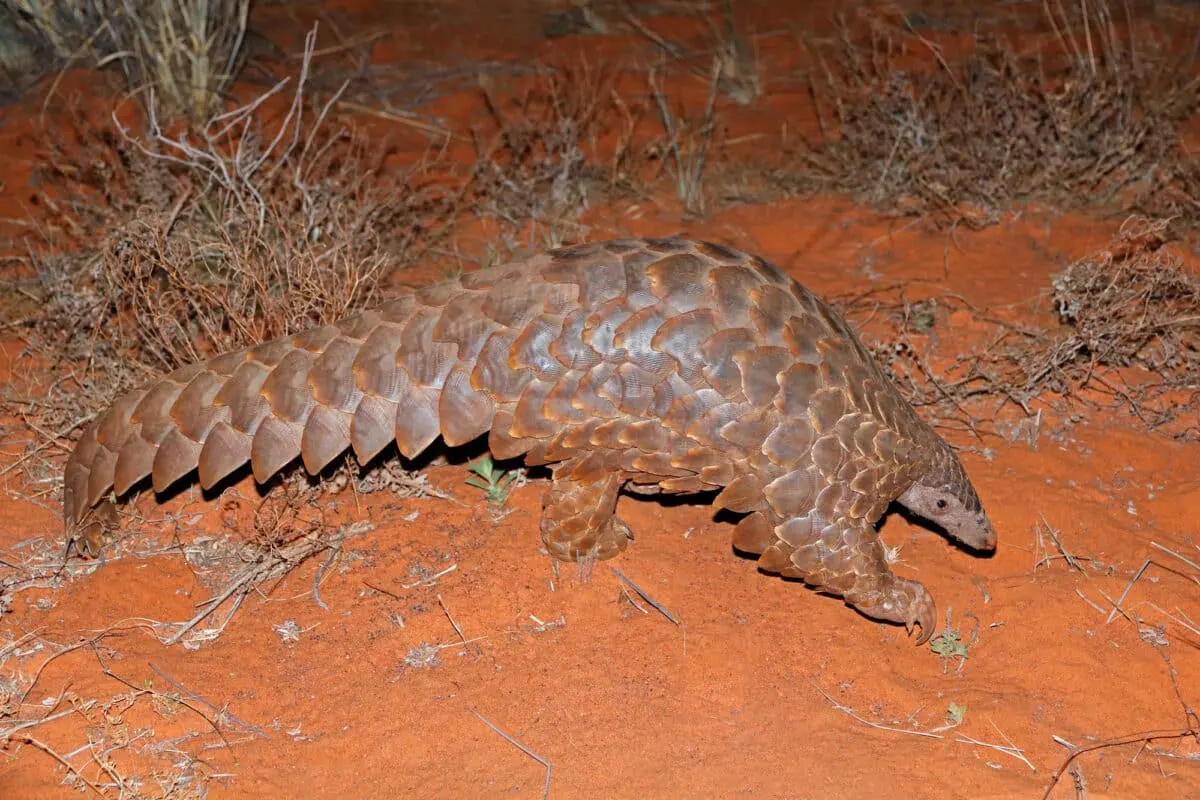In this post you’ll learn of an incident where an illegal pangolin-dealer was caught in the act, saving one individual of the highly endangered species.

In a recent incident, South African law enforcement were able to score a much needed victory in the battle against the illegal wildlife trade when they caught an illegal pangolin-dealer red-handed. This event incident serves as a poignant reminder of the grave threat posed by the underground wildlife trade.
The pangolin, an exquisite creature often hailed as the “world’s most trafficked mammal,” has become a prime target for illegal traders. With its intricate scales and captivating appearance, the pangolin is a living masterpiece of nature. Sadly, many greed-driven illegal traders seek to make profits at the expense of these innocent beings.
Join us as we delve into the details of this gripping account. We’ll also shed light on the forces driving the demand for the beloved and endangered pangolin.
Key Points
- Law enforcement arrested an illegal wildlife trafficker attempting to sell a pangolin, saving the endangered creature from certain death.
- This is not an isolated case; illegal wildlife trading is an ongoing issue threatening precious wildlife (especially already endangered species.)
- Due to false medicinal beliefs, perceived delicacy, use in artisan crafts, and being asymbol of wealth and prestige are all reasons for its popularity on the black market.
- Pangolins have tough scales and exhibit a unique defense behavior by curling into a ball when threatened.
- All pangolin species are classified as critically endangered or endangered.
The Incident

On May 17th in Gravelotte, in the province of Limpopo in South Africa, law enforcement were able to arrest an illegal wildlife trafficker thanks to a tip off. A 59-year-old man thought he could exploit the endangered pangolin’s rarity for his personal gain. Luckily justice caught up with him and the precious pangolin was saved from its inevitable death that would’ve ensued had the illegal trafficking been successful.
A coalition of dedicated wildlife advocates teamed up with various police units to tackle this grave threat to South Africa’s precious wildlife. Acting on a vital tip-off, they swiftly mobilized, and proceeded with their mission to intercept the suspect who was allegedly en route to sell a pangolin in Hoedspruit.
Acting promptly, the team identified a suspicious vehicle in Gravelotte. Upon conducting a search, they discovered a pangolin hidden in a bag inside the car’s trunk. The pangolin was estimated to be worth R150,000 (roughly $7,700.)
The suspect was unable to provide the necessary permit for possessing the pangolin, resulting in his immediate arrest. He has since been charged with illegal dealing in an endangered species. This incident serves as another reminder of the ongoing challenges in protecting endangered wildlife.
A Similar Incident
It’s worth noting that the above mentioned incident is not an isolated case. A similar event occurred last year in central Johannesburg. Here, two individuals, one of whom was a police constable, were charged with illegal pangolin trading and violating environmental conservation laws. The Hawks, a specialized unit tasked with combating organized crime, carried out an intelligence-driven operation that led to the interception and identification of the suspects.
These incidents highlight the persistent threat posed by wildlife trafficking and the need for continued efforts to combat such illegal activities. The pangolin, already facing the risk of extinction, requires heightened protection and conservation measures to ensure its survival.
Why Are Pangolins Popular On the Wildlife Black Market?

Pangolins, often referred to as “scaly anteaters,” have unfortunately become highly sought-after on the black market for wildlife. There are several reasons behind their popularity and the lucrative illegal trade surrounding these unique creatures. Here are the some of the main reasons:
#1 Medicinal Beliefs
In traditional Chinese medicine and other Asian medicinal practices, they believe that pangolin scales possess healing properties. They are falsely thought to treat a range of ailments, including arthritis, asthma, and cancer.
#2 Seen As a Delicacy
In certain regions, pangolin meat is considered a delicacy and is associated with status and luxury. It is believed that consuming pangolin flesh provides various health benefits, despite the absence of supporting scientific evidence. Restaurants catering to high-end clientele sometimes offer pangolin dishes (illegally, of course,) further driving demand.
#3 Used For Artisan Crafts
Pangolin scales, claws, and other body parts are often used in traditional crafts and jewelry. These items hold cultural significance in some communities, and their scarcity adds to their value. Trinkets made from pangolin parts are sold as ornaments or collectibles, fueling the demand.
#4 Symbol of Wealth and Prestige
Owning a pangolin, particularly in some Asian cultures, is seen as a symbol of wealth and social status. This demand drives the capture and trade of live pangolins, further threatening their populations.
Getting To Know the Pangolin

Physical Traits
Pangolins are covered in tough, overlapping scales made of keratin, much like our fingernails. These scales act as armor, providing protection from predators. Their powerful claws are perfect for digging and climbing trees.
They have elongated bodies with a rounded head and small eyes. Its sticky tongue is extremely long and can extend up to 16 inches. On average, pangolins measure between 12 to 39 inches in length, from the tip of their snout to the base of their tail. Their weight can range from around 2.2 to 73 pounds.
Habitat and Range
Pangolins primarily inhabit tropical and subtropical regions. The African species inhabit a range stretching from Senegal to Uganda and as far south as South Africa. Asian pangolins are present across Southeast Asia, including countries like China, India, and Indonesia. They inhabit various ecosystems such as forests, grasslands, and savannas, relying on vegetation and tree hollows for shelter.
Diet
Pangolins are insectivorous, primarily feasting on ants and termites. Their long, sticky tongue allows them to probe into insect nests, extracting their prey with remarkable precision. With an insatiable appetite, they can consume thousands of insects in a single day, playing a crucial role in controlling insect populations.
Behavior
Nocturnal by nature, pangolins are most active during the night. Their exceptional sense of smell helps them locate ant and termite nests. When threatened, pangolins employ a unique defense mechanism. They curl into a tight ball, exposing only their tough scales to predators. This self-protective behavior acts as a formidable shield against most predators.
Endangerment Status
All eight species of pangolins are classified as either critically endangered or endangered according to the IUCN Red List. Rampant poaching and illegal wildlife trafficking (just like the incident described above) driven by demand for their scales and meat, pose grave threats to their survival. Additionally, habitat destruction, including deforestation and land conversion, further diminishes their populations.
Wrapping Up
In conclusion, the incident in South Africa where an illegal pangolin-dealer was caught serves as a stark reminder of the ongoing challenges of illegal trafficking of wildlife. The arrest of the wildlife trafficker, and the subsequent rescue of the precious pangolin, show the impressive efforts of wildlife advocates and law enforcement agencies.
Pangolins, often referred to as “scaly anteaters,” are unique creatures. They are sport tough, overlapping scales made of keratin, providing them with armor-like protection. Unfortunately, all eight species of pangolins are classified as critically endangered or endangered, primarily due to rampant poaching and illegal wildlife trafficking driven by demand for their scales and meat.
Additionally, habitat destruction further diminishes their populations. Heightened protection, conservation measures, and continued efforts to combat illegal activities are crucial to ensure the survival of these fascinating and vulnerable creatures.
Thank you for reading this article! Feel like another serving of piping hot animal news? Read about how a tiny frog might be helpful to medical research or watch the unlikely event of a beluga whale stealing a woman’s phone.
Join our Forum for free today!

- Baby Lion Cub Disciplined by Sibling to Not Bite Dad - July 25, 2024
- Signs Of Coyotes Visiting Your Property - July 23, 2024
- Beware Of The Rabid Wolf Spider In The United States - July 23, 2024

